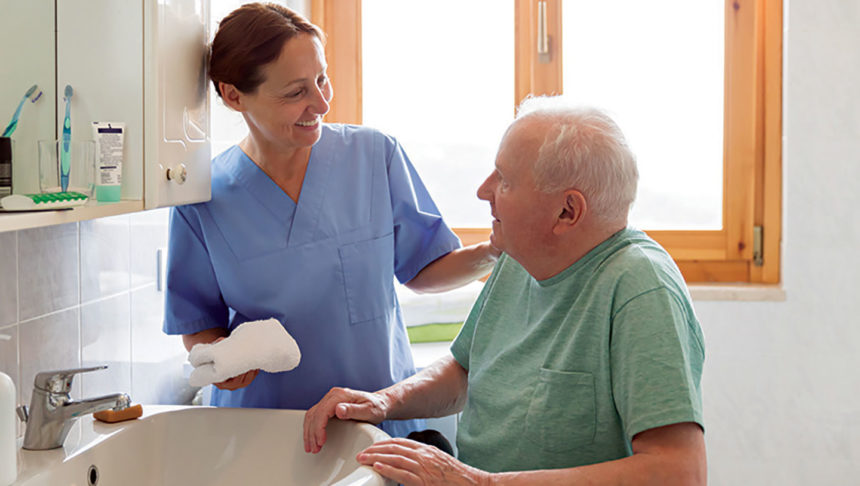
Workforce shortages continue to challenge providers in many areas, and resident bathing isn’t exempt. Industry vendors share tips to improve the bathing experience for residents, even when staffing is limited.
1. Be mindful of acceptable practices as a guiding light.
Continuity is essential for resident comfort and privacy, said Mary Madison, RN, RAC-CT, CDP, clinical consultant for LTC and senior living at Briggs Healthcare.
Many communities try to maintain a dedicated group of bath aides, she said. When that’s not possible, consider moving to a team-based approach. Direct care staff have a more central role in directing that care, according to Patricia Howell, RN, BSN, WCC, CFCS, clinical support manager, McKesson Medical-Surgical. Another approach is to hire home care agencies to fill gaps.
2. Consider accepted workarounds and “shortcuts.”
For instance, could walk-in tub/shower systems be retrofitted to improve safety and require less staff time for highly mobile residents?
“Nursing staff should be aware that patients/residents have varying preferences, and it is important to incorporate the patients’ preferences in the development of bed-bath practices,” Howell said.
3. Make prudent use of accessories and tools.
Safer alternatives to basin baths include disposable, no-rinse bath wipes; bathing gloves; and a waterless, leave-on, skin compatible bathing system, according to Howell.
4. Remain vigilant.
Diminished staffing can be a recipe for bathing hazards that could cause resident and, ultimately, community harm. For example, regular use of bath basins with water and soap potentially can become contaminated with nosocomial pathogens.
5. Enlist family members to assist.
“I have seen family members assisting with feeding, shampooing and styling hair and providing personal care, including toileting and assisting with brief changes for those who are incontinent,” said Howell.
Madison, however, strongly warned against allowing any nonemployee to operate bath lifts.



